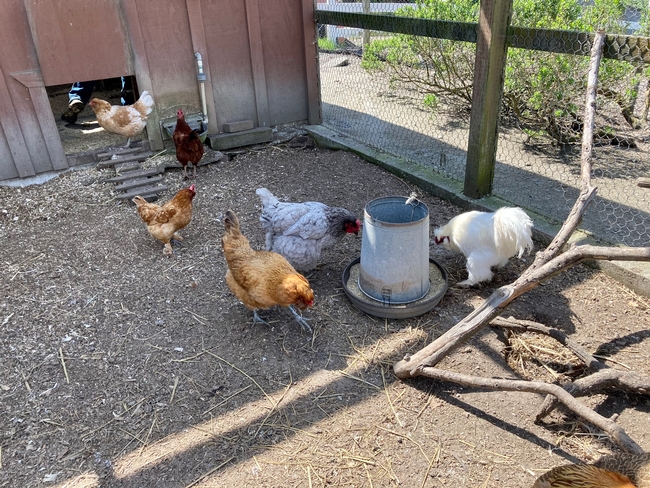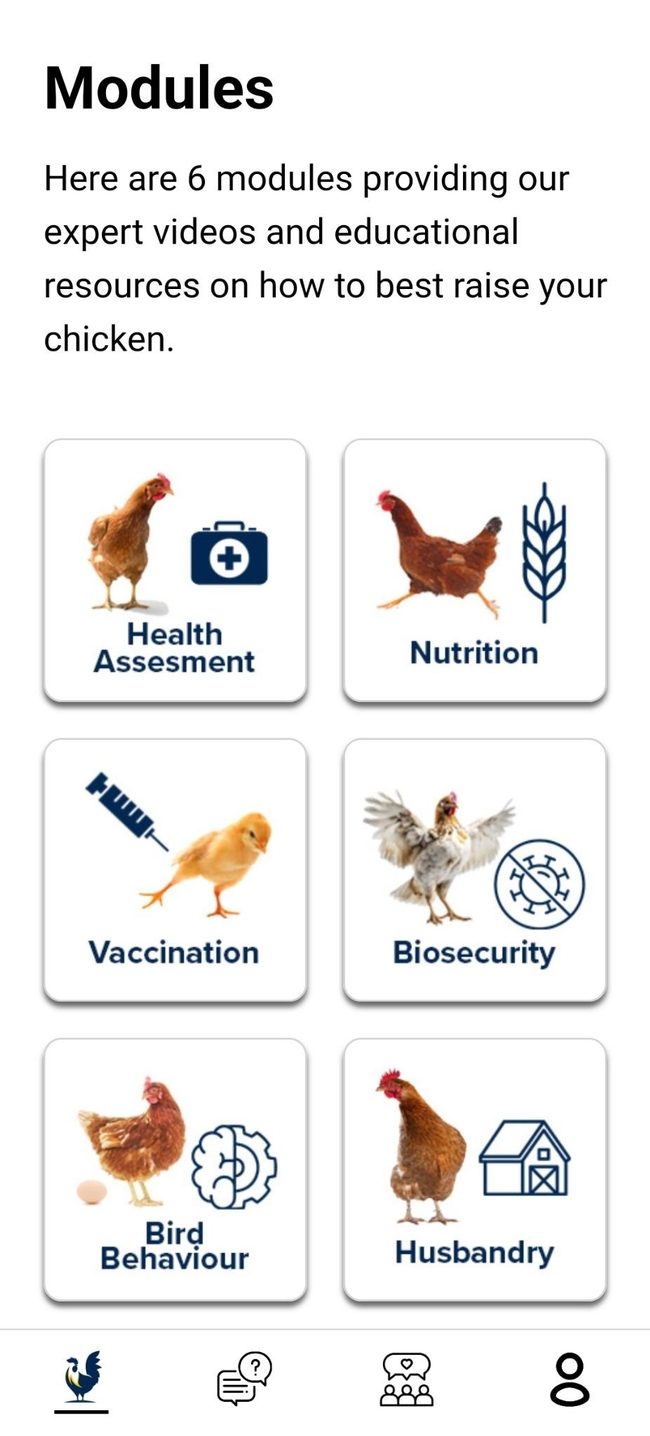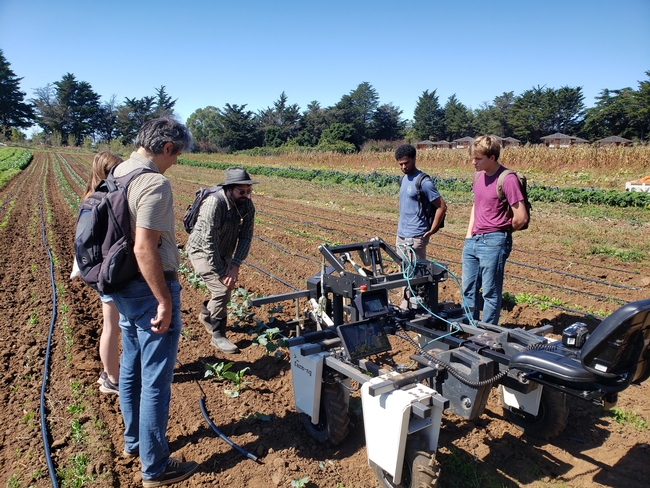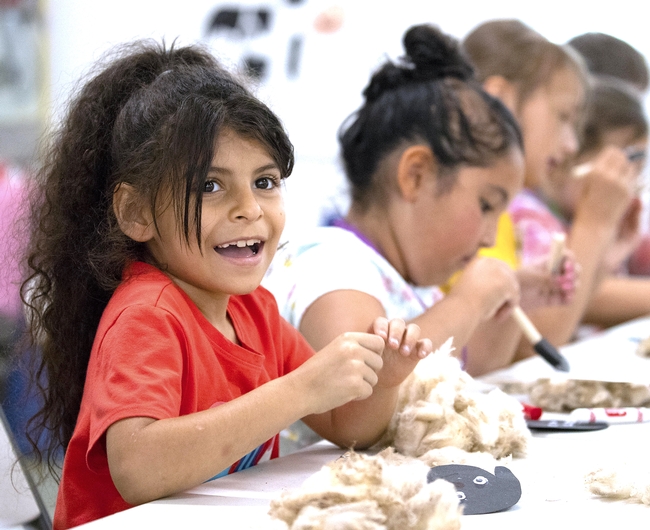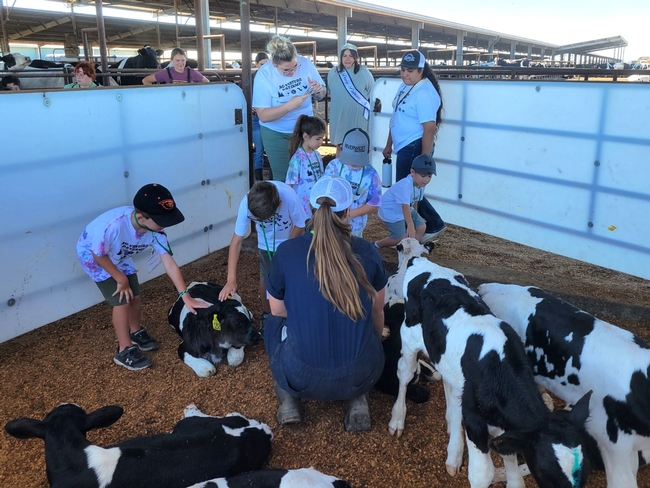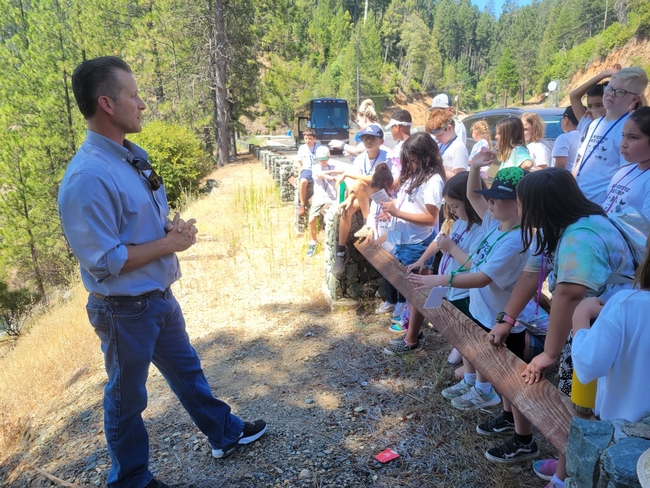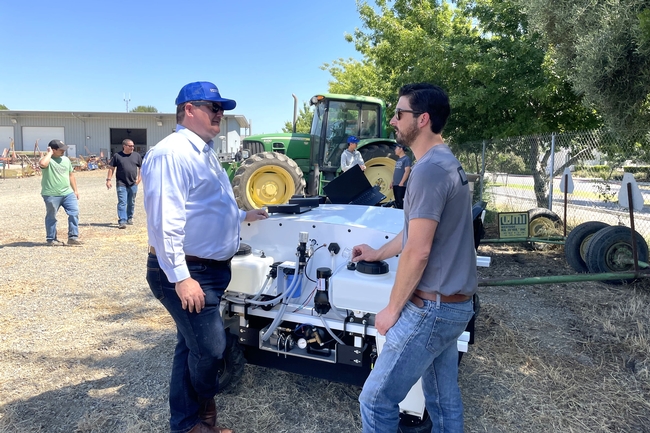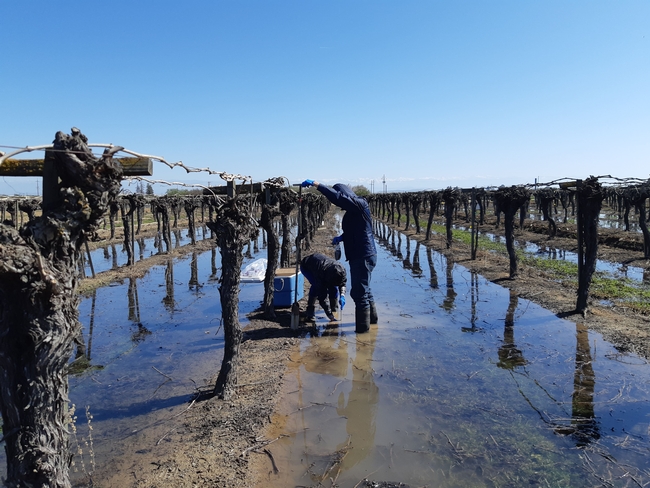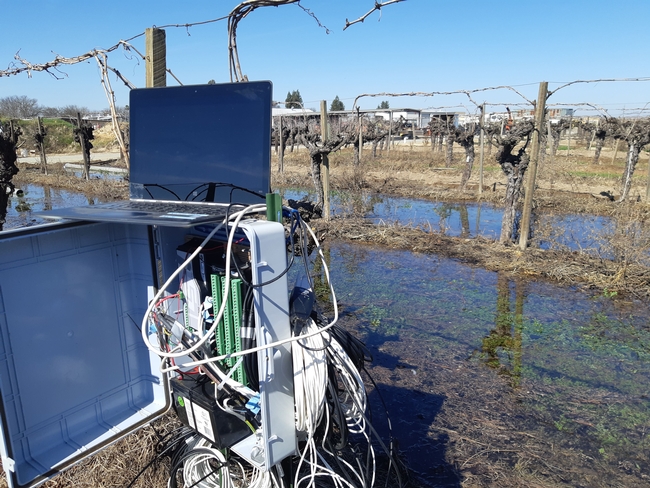Posts Tagged: ag
Chicken community ‘coop-eration’ needed to test UC poultry health app
If you raise backyard chickens or breed game fowl, UC Cooperative Extension has an app for you. The new mobile app offers information for raising healthy chickens.
To test the usefulness of the UC Community Chicken app to people raising chickens, the Poultry Lab at the UC Davis School of Veterinary Medicine will pay poultry owners to participate in a two-week study with a follow-up survey three months later.
“Our study focuses on the development and evaluation of a new mobile app for backyard chicken owners and game fowl breeders,” said Maurice Pitesky, UC Davis School of Veterinary Medicine associate professor of Cooperative Extension. “The goal is to examine the app's effectiveness as a communication tool within the poultry community.”
To be eligible, participants must be backyard chicken owners who are 13 years or older or game fowl breeders over 18 years of age. They will need to have Apple or Android phones or tablets to access the app.
What's in the app?
The UC Community Chicken app contains six educational modules with short videos that cover health assessment, nutrition, vaccination, biosecurity, bird behavior and husbandry. It also features chat and feedback buttons so participants can communicate with the UC experts and other poultry owners.
“We value the thoughts and experiences of people who are raising poultry,” said Myrna Cadena, Ph.D. student in Pitesky's lab. “Their input will be valuable in shaping the way we extend information about poultry health.”
Study timeline
For two weeks, participants will explore the educational resources and other features and complete the surveys. Three months later, the researchers will follow up with a survey to assess the chicken owners' progress.
Participants who complete the entire study and follow-up survey will receive a $25 Amazon gift card via email. Those who do not finish the entire study will be compensated based on their level of participation. The study will be limited to 220 participants.
To register for the study, go to https://bit.ly/UCchickenapp. Once the study is ready, participants will be notified via email. The UC Community Chicken app will be available to the public after the study is complete. For more information about the study, contact Maurice Pitesky at drcluck@ucdavis.edu.
Farm Robotics Challenge launches 2024 college competition
Students must form teams by Oct. 31; proposals due Nov. 15
Registration is now open for college teams competing in the 2024 Farm Robotics Challenge and proposals are due Nov. 15. The collegiate competition is organized by The VINE, an initiative of University of California Agriculture and Natural Resources, in collaboration with farm-ng, F3 Innovate and AI Institute for Next Gen Food Systems.
The Farm Robotics Challenge is an annual event where teams of students from universities and colleges across the United States tackle real-world farming challenges. The competition focuses on small-farm applications and leverages the state-of-the-art Amiga robot to integrate robotics into agricultural research. This year, the challenge is expanding by introducing a new division for two-year colleges, to allow more students to participate.
“The Farm Robotics Challenge is not just another competition; it's a transformative experience designed to cultivate the next generation of leaders in agricultural technology,” said Gabe Youtsey, UC ANR chief innovation officer and founder of The VINE. “By participating in this challenge, students are not only showcasing their technical skills, but also contributing to a larger mission — advancing sustainable and efficient farming practices for the future. We're incredibly excited to see the solutions that these young entrepreneurs will bring to the table.”
Teams are expected to address a variety of production farming topics, which can range from any crop or size of farm. The challenges for the competition are categorized into three main areas: Autonomy, which includes course navigation; Artificial Intelligence, focusing on vision and sensing as well as dataset collection; and Attachment, which involves the development of devices that can be attached to the robot for farm tasks..
“We're proud to join forces with the University of California Agriculture and Natural Resources for the second annual Farm Robotics Challenge," said Ethan Rublee, CEO of farm-ng. "With our Amiga robotics platform, our aim is to not only inspire the next wave of agricultural innovation, but also to prepare the workforce that will bring these innovations to life.”
Judging for the competition will be based on a range of criteria including the accuracy and completeness of the project, the elegance and ease of use in the design, safety measures, interdisciplinary inclusion, societal and economic impact, cost considerations, and the commercial and market potential of the solution.
The competition will consist of two main parts: market research, project proposal and fundraising; followed by development, coding and fabrication. Key dates include:
- Team formation deadline: Oct. 31
- Project proposal submission deadline: Nov. 15
- Development start: Jan. 31, 2024
- Judging: Sept. 6, 2024
Interested students, universities and investors are encouraged to visit the official Farm Robotics Challenge website at www.farmroboticschallenge.ai to fill out interest forms and get involved. The website also features detailed information about the challenges and judging criteria.
About The VINE
The VINE, an initiative of University of California Agriculture and Natural Resources, is California's agriculture, food, and biotech innovation network. Our mission is to harness the power of open innovation to help industries and entrepreneurs grow and scale globally while catalyzing technology innovation and commercialization for productive, sustainable and equitable food systems.
About AIFS
Established on Oct. 1, 2020, the Artificial Intelligence Institute for Next Generation Food Systems, or AIFS, aims to solve the world's biggest challenges to crop and food production facing our planet: ensuring a sustainable, nutritious, efficient and safe food supply while mitigating the impacts of climate change.
About farm-ng
Based in Watsonville, farm-ng is building general purpose off-road robotics hardware and software products. The company's mission is to transform the food system by democratizing access for the smallest farmer to cutting-edge robotics technology.
About F3 Innovate
Headquartered in California's Central Valley, F3 Innovate is the U.S. epicenter for climate-smart agrifood tech. With proximity to over 13,650 farms and 5 million acres of farmland, we collaborate with top research institutions to advance industry research and development. Supported by federal and state funding, F3 Innovate is geared to shape the future of sustainable food production worldwide.
Ag-Venture campers dive ‘head first’ into agriculture, natural resources
UC Cooperative Extension team in Sutter and Yuba counties showcases UC ANR programs, community partners
When dozens of elementary schoolers gathered to watch a live calf birth at Tollcrest Dairy in Yuba County, their comments ranged from “disgusting but cool” to “I saw something that maybe I'm too young to see.”
Expanding horizons, growing knowledge and gently pushing some limits were at the heart of a four-week day camp, Ag-Venture, organized by the University of California Cooperative Extension office serving Sutter and Yuba counties.
Throughout July, more than 80 campers – ages 5 through 12 – explored agriculture and science topics through field trips across the region, hands-on activities and lively presentations by UCCE advisors, UC Master Gardeners, 4-H specialists, UC Master Food Preservers and CalFresh Healthy Living, UC educators. All these groups fall under the umbrella of UC Agriculture and Natural Resources.
A grant from The Center at Sierra Health Foundation funded this day camp for underserved youth focused on agriculture and natural resources – the first of its kind in the area. Exploring the themes of “Interesting Insects,” “Foods and Farms,” “Woods and Water” and “Awesome Animals,” the campers learned directly from community experts and UC ANR scientists.
“Some of the kids might think scientists are only wearing lab coats and working with genetics and DNA and human-based science, but here they got to see agricultural scientists and natural scientists,” said Rayna Barden, the 4-H community education specialist who led the camp. “It was a cool way to showcase what ANR does and what we have to offer.”
Youth gain wide range of experiences, knowledge
Visits to local farms and ranches – with many chances to greet the animals – were a highlight for many of the camp participants.
“I liked learning about agriculture and the interactive activities,” said a fourth grader. “I saw a baby cow coming out of its mama, and they [farm staff] had to use a tool. It was cool.”
A sixth grader said: “I learned that feed is made up of everyday items, like almond shells and beer hops!”
“Sheep, cows and goats have one stomach and four chambers,” added another sixth grader.
That digestive tidbit was absorbed by the campers after a visit with UCCE livestock and natural resources advisor Dan Macon at Sierra Foothill Research and Extension Center, a facility operated by UC ANR in Browns Valley.
“We have 4-H kids and FFA kids in high school who still don't know how the four chambers work!” Barden said. “These kids had it and it was so cool to see that they remembered that from a previous day.”
Time and time again, Barden said she was amazed at how much the campers retained. After a visit to Bullards Bar Reservoir, a seven-year-old was able to explain why the dam is curved. Another young boy could draw his own interpretation of the water cycle. And several campers talked about the rice presentation for weeks.
Whitney Brim-DeForest, UCCE county director for Sutter and Yuba counties and a rice advisor, had the participants touch and feel different rice seeds and varieties. The campers also got to plant a few rice seeds to take home.
“But their favorite part – and what they talked about for the rest of camp – was the tadpole shrimp,” Brim-DeForest said. “We brought some live and preserved specimens, and they loved them!”
Sparking ideas for future careers
One third-grade camper said she enjoyed learning the differences between agricultural pests and beneficial insects.
“And you can do stuff to help the good bugs,” she said, adding that she would like to pursue a career working with animals and nature.
Expanding awareness among young people of new career possibilities was exciting for Ricky Satomi, UCCE forestry and natural resources advisor for Sutter and Yuba counties. Using interactive exercises (such as those developed by California Project Learning Tree, another UC ANR-affiliated program), Satomi shared his knowledge about resource competition, watershed filtration and fire behavior in forest ecosystems.
“It's always a pleasure to introduce students to the natural resources where they live,” Satomi said. “This is particularly critical given the current workforce shortage we face in forestry; I hope their experience at Ag-Venture will spark interest in future forestry careers, where these students can work to better their local forest communities.”
Young people from local colleges and universities also gained invaluable experience during the camp. Four students helped prepare the camp: Yasmeen Castro Guillen (Chico State), Alana Logie (Yuba College), Jayla Pollard (Folsom Lake College) and Adam Yandel (Chico State). Three more helped lead the camp as counselors: Hector Amezcua (Yuba College), Alyssa Nott (Butte College) and Jillian Ruiz (Chico State).
“They did such a fantastic job, mentoring the kids and serving as positive role models, and we have seen tremendous growth in all of them, too – in confidence, skills and knowledge,” said Brim-DeForest.
A true community effort
Barden emphasized that the sweeping scope and in-depth, intertwining lessons of the camp were only possible through broad support from the greater community. Brim-DeForest highlighted the partnership with Yuba City Unified School District, as well as with Sutter County. Camp HQ was in Ettl Hall, a Sutter County building; campers visited the Sutter County Museum; they also met Yuba-Sutter public health officer Dr. Phuong Luu.
Additional collaborators included Melissa Ussery, CalFresh Healthy Living, UC nutrition program supervisor; Rene McCrory, 4-H secretary; Johnny Yang, UC Master Gardener and Master Food Preserver program coordinator; Matt Rodriguez, 4-H youth development advisor; and Nicole Marshall-Wheeler, 4-H youth development advisor.
“Honestly, we could plan all of this, but without the community's support, our program never would have worked smoothly,” said Barden, who grew up in the small town of Sutter. “Having all of our guest speakers, having all the people who were willing to have up to 50 kids on their property – it just shows how much our community is about our youth.”
Brim-DeForest said Sandy Parker, the camp nurse, exemplifies that spirit. A UC Master Gardener and 4-H alumna and volunteer, Parker also invited the campers to her family ranch, where she introduced the children to her farm animals and Great Pyrenees guardian dog.
The campers certainly appreciated the generosity, teamwork and energy that went into Ag-Venture. Barden said that many of the participants originally had only signed up for one or two weeks – but loved the camp so much that they asked to register for more. And she added that the “vast majority” of them said they want Ag-Venture to come back and would attend in the future.
“Our youth are just so resilient and so willing to learn,” Barden said, reflecting on the camp overall. “Whereas adults, we're usually a little more timid at things, these kids just were willing to dive in, head first, and be in that moment and try to take away as much as they could from what they were offered there at camp.”
The VINE announces call for startups to apply for field-trial support
Validation of Innovation Program provides supportive ecosystem for startups
The VINE, an initiative by the University of California Agriculture and Natural Resources, is now accepting applications for its VINE Validation of Innovation Program. The program aims to support innovation in the agri-tech sector, particularly in climate-resilient solutions for California food systems.
Made possible with support from a UC Climate Action grant, the program is inviting startups to apply, with a focus on providing comprehensive support for field trials – a critical stage for any agri-tech venture.
"Field trials are vital for validating new innovations in the agri-tech sector,” said Gabe Youtsey, chief innovation officer with UC ANR and founder of The VINE. “The VINE VIP aims to provide a supportive environment for carrying out these essential tests, bridging the gap between innovative concepts and real-world application."
Elif Ceylan, co-founder of OpenGate Partners and head of the VINE VIP, also stressed the importance of field trials.
"Field trials serve as a crucial phase where promising ideas either succeed or require adjustment,” Ceylan said. “We are committed to prioritizing this stage to ensure the effectiveness and relevance of emerging agri-tech solutions."
The VINE VIP offers more than field trials. It provides a supportive ecosystem for startups, including industry connections, access to a broad network of farmers and experts, comprehensive validation results and market entry support. The program is a unique accelerator that pairs startups with project partners in the agri-tech industry, facilitating Proof of Concept projects and commercialization trials for industry-defined challenges in California agriculture.
By connecting startups with farmers, academics and industry experts, the program aims to validate, advance, adopt and amplify innovative technologies, reducing technological risks and accelerating sales through its extensive industry network.
Startups interested in joining the VINE VIP can apply until Sept. 16, 2023. Detailed information about the program and the application process is available on The VINE's website at thevine.io/vip.
The VINE is an initiative of the University of California Agriculture and Natural Resources, dedicated to fostering agriculture, food, and biotech innovation in California. Our mission is to support industries and entrepreneurs while promoting technology innovation and commercialization for sustainable and equitable food systems. We connect entrepreneurs with public and private sector resources, encourage collaborations to address industry challenges, and promote regional capacity for global innovation as an economic opportunity.
Study offers insights on reducing nitrate contamination from groundwater recharge
Light irrigation before flooding stimulates microbes to remove nitrates from soil
With California enduring record-breaking rain and snow and Gov. Gavin Newsom recently easing restrictions on groundwater recharge, interest in “managed aquifer recharge” has never been higher. This process – by which floodwater is routed to sites such as farm fields so that it percolates into the aquifer – holds great promise as a tool to replenish depleted groundwater stores across the state.
But one concern, in the agricultural context, is how recharge might push nitrates from fertilizer into the groundwater supply. Consumption of well water contaminated with nitrates has been linked to increased risk of cancers, birth defects and other health impacts.
“Many growers want to provide farmland to help recharge groundwater, but they don't want to contribute to nitrate contamination of the groundwater, and they need to know how on-farm recharge practices might affect their crops,” said Matthew Fidelibus, a University of California Cooperative Extension specialist in the UC Davis Department of Viticulture and Enology.
A recently published study by UC scientists sheds new light on how nitrates move through an agricultural recharge site and how growers might reduce potential leaching. Researchers analyzed data from two grapevine vineyards at Kearney Agricultural Research and Extension Center in Fresno County – one flooded for two weeks, and other for four.
Understanding initial nitrate levels crucial
A key factor in mitigating contamination is understanding how much nitrate is in the soil at the outset, said study author Helen Dahlke, a UC Davis hydrologist and leader of UC Agriculture and Natural Resources' strategic initiative on water. In areas with little precipitation and cropping systems that require greater amounts of synthetic fertilizer, the accumulation of residual nitrate – resulting from nitrogen in the fertilizer not taken up by the plants – can be quite high.
“The percentage of nitrates in some soils can really increase over the years, particularly if you have many dry years in a row where you don't have access to irrigation water or natural precipitation flushing some of those nitrates out of the soil,” Dahlke said.
While intense rains in recent weeks have helped dilute nitrate concentrations naturally, farmers looking to participate in recharge during the dry years ahead should consider flooding their fields with greater volumes of water.
“If you're doing this for the first time – on-farm recharge in the winter – check your residual soil nitrate levels because if they're very high, you should apply a lot of water in order to make sure that the residual nitrate is diluted down,” said Dahlke, who also added that growers should check their soil properties for suitability of recharge projects.
She recommended using, as a “good first approximation,” the online Soil Agricultural Groundwater Banking Index map, a project led by Toby O'Geen, a UC Cooperative Extension soil resource specialist.
Researchers looking at other ways to reduce nitrates
Even before flooding the fields for recharge, there are several practices that can lower initial nitrate levels and risk of leaching. Cover crops such as alfalfa and triticale, for example, can help take up residual nitrates that accumulate from fertilizing a main crop over time.
Dahlke and Fidelibus – a co-author of the San Joaquin Valley vineyard study – both pointed to pre-flooding irrigation that encourages denitrification, a process in which soil microbes transform nitrates into gaseous forms of nitrogen.
“Those denitrifying microbes need to be stimulated to do the work,” said Dahlke. “What we have found is that if you do a little bit of irrigation before you start the flooding, increasing the soil moisture can get those microbes started and they can take out more nitrate from the soil.”
The timing and quantity of fertilizer applications are also major factors in reducing leaching. Although more growers are following high-frequency, low-concentration practices to maximize uptake by crops, Dahlke said there needs to be more emphasis on incorporating nitrogen transformation processes – such as denitrification – in the nutrient management guidelines that farmers follow.
“Implementing thoughtful nutrient management plans will play a particularly important role in participating farms,” Fidelibus added.
A more holistic view of groundwater recharge
In short, choices made during the growing season can affect those in the winter recharge season – and vice versa. For example, applying compost or other organic amendments to soil can give microbes the “fuel” they need for sustained denitrification.
“What we have found is that our denitrifying bacteria often run out of steam because they don't have enough carbon to do the work,” Dahlke said. “Like us, microbes need energy to do the work, and for microbes this energy comes from soil carbon.”
Then, adding moisture via recharge to that field with high organic content can stimulate mineralization and nitrification, processes in which microbes transform the organic nitrogen into ammonium – and subsequently nitrates – that the plants can then take up. Those naturally occurring nitrates would thus reduce the need for the grower to apply synthetic fertilizer.
“The winter on-farm recharge experiments have shown that altering the moisture regime in the winter has consequences for the nitrogen budget in the summer growing season,” Dahlke explained. “Theoretically, what we need to be doing is better integrating both seasons by keeping an eye on the soil-nitrogen balance across the whole year so that we can ensure, at the end of the growing season, the residual nitrate in the soil is minimized.”
The study, published in the journal Science of The Total Environment, was part of the post-doctoral work of former UC Davis researcher Elad Levintal. In addition to Fidelibus and Dahlke, other authors are Laibin Huang, Cristina Prieto García, Adolfo Coyotl, William Horwath and Jorge Rodrigues, all in the Department of Land, Air and Water Resources at UC Davis.

